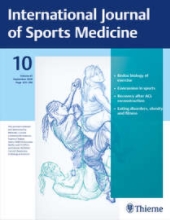Gualtieri A1, Rampinini E2, Sassi R1, Beato M3
1, Juventus FC, Sports Science, Torino, Italy; 2, MAPEI Sport Research Centre, Human Performance Laboratory, Olgiate Olona (VA), Italy; 3, School of Health and Sports Sciences, University of Suffolk, Ipswich, United Kingdom of Great Britain and Northern Ireland.

ABSTRACT
This study assessed the internal and external workload of starters and non-starters in a professional top-level soccer team during a congested fixture period. Twenty Serie A soccer players were monitored in this study during two mesocycles of 21 days each. Starters and non-starters were divided based on the match time played in each mesocycle. The following metrics were recorded: exposure time, total distance, relative total distance, high-speed running distance over 20 km·h-1, very high-speed running distance over 25 km·h-1, individual very high-speed distance over 80% of maximum peak speed, and rating of perceived exertion. Differences between starters and non-starters were found for: exposure time (effect size=large to very large), rating of perceived exertion (large to very large), total distance (large to very large), and individual very high-speed distance over 80% of maximum peak speed (moderate to large). Furthermore, differences for relative total distance, high-speed running distance over 20 km·h-1 and very high-speed running distance over 25 km·h-1 were small to moderate, but not significant. This study reports that during congested fixture periods, starters had higher exposure time, rating of perceived exertion, total distance, and individual very high-speed distance over 80% of maximum peak speed than non-starters.
Int J Sports Med. 2020 May;
PMID: 32455455 DOI: 10.1055/a-1171-1865